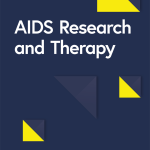The PI3K-Akt signaling model
We developed a model of the PI3K-Akt signaling to provide a platform for investigating the effects of HFD and KD on PI3K-Akt signaling. Figure 1 provides an overview of the key components described in this paper. For a detailed diagram including all components, please refer to Supplementary Fig. 1. The core of the model is the PI3K and Akt (highlighted in red) proteins. In addition to the PI3K-Akt signaling pathway, this model also considers critical components related to mTOR (highlighted in blue) signaling pathway, MAPK (highlighted in orange) signaling pathway, FoxO (highlighted in green) signaling pathway, NF-κB (highlighted in cyan) signaling pathway, p53 (highlighted in purple) signaling pathway, ErbB signaling pathway, insulin signaling pathway, VEGF signaling pathway, Toll-like receptor signaling pathway, B cell receptor signaling pathway, JAK-STAT signaling pathway, Focal adhesion and Chemokine signaling pathway. The pathway outputs of this model include protein synthesis (P_ProSyn); cell proliferation, angiogenesis and DNA repair (P_ProAagioDNAre); glucose uptake and vesicle transport (P_GuptakeVesi); actin reorganization (P_ActinRe); survival signal, growth and proliferation (P_SurGroPro); glycolysis / gluconeogenesis (P_Metabolism); cell cycle progression (P_CellCycle); apoptosis (P_Apoptosis). The HFD model and the KD model are available as Supplementary File 1 and Supplementary File 2, respectively.
The simplified scheme of the PI3K-Akt signaling pathway mathematical model. This figure illustrates the core components and interactions within the PI3K-Akt signaling pathway, along with its integration with other critical signaling pathways, such as mTOR (blue), MAPK (orange), FoxO (green), NF-κB (cyan), and Trp53 (purple). The model outputs, depicted in yellow, encompass various cellular processes influenced by these pathways, including protein synthesis (P_ProSyn), cell proliferation, angiogenesis, and DNA repair (P_ProAagioDNAre), glucose uptake and vesicle transport (P_GuptakeVesi), actin reorganization (P_ActinRe), survival signaling, growth, and proliferation (P_SurGroPro), glycolysis and gluconeogenesis (P_Metabolism), cell cycle progression (P_CellCycle), and apoptosis (P_Apoptosis). This schematic serves as an overview of the complex interactions modeled to study the effects of HFD and KD on PI3K-Akt signaling
Modeling the impact of HFD and KD on PI3K-Akt signaling
The simulated results presented in Fig. 2 provide a comprehensive overview of the dynamics of key signaling molecules in the PI3K-Akt pathway under both HFD and KD conditions. The initial concentration of the inactive forms and the genes considered in the model are shown in Supplementary Table 1. The initial concentrations of the active forms are set to 0. To maintain simplicity and ensure consistency in our simulations, we set all parameters to a value of 2, with the exception of the inhibition constants ki_Akt1_Activation, ki_Bad_Activation, and ki_Mdm2_Activation, which were allowed to vary to simulate the effects after inhibition. The use of Hill equations to model the reactions in our study is justified by the fact that the activation and inactivation processes in signaling pathways can be considered as enzymatic reactions.
Under the influence of HFD, our computational model demonstrates distinct activation kinetics for various key components of the PI3K-Akt signaling pathway. Notably, at the early stages, we observe rapid activation of Trp53 (Trp53_active), Bad (Bad_active), and Akt (Akt1_active). As the simulation progresses, the activation of PI3K (Pik3ca_active) and Mdm2 (Mdm2_active) becomes prominent during the middle stages. Finally, during the late stages of the simulation, Mtor (Mtor_active), Ras (Hras_active), and Erk (Mapk1_active) exhibit substantial activation (Fig. 2A). In contrast, when the system is subjected to a KD, we observe a nuanced shift in the activation profiles within the PI3K-Akt signaling pathway. Bad (Bad_active) is rapidly activated during the early stages of the simulation, akin to the HFD condition. However, under KD conditions, Akt1 (Akt1_active), Pik3ca (Pik3ca_active), Trp53 (Trp53_active), Mdm2 (Mdm2_active), and mTOR (Mtor_active) exhibit notable activation during the middle stages. Interestingly, RAS (Hras_active) and Erk (Mapk1_active) demonstrate delayed activation, occurring primarily during the late stages (Fig. 2B). These simulated results show that the KD is able to reduce the activation of Erk, Trp53, and apoptosis in comparison to HFD. Several studies have shown that Erk is activated in HFD [41, 42] and repressed in KD [43]. Trp53 is activated in HFD [44, 45] and repressed in KD [46, 47]. In addition, Trp53 was also found to be closely related to the apoptosis of cardiacmyocytes [48], suggesting that Trp53 plays an important role in the cardiacmyocyte apoptosis in HFD. The simulated results are in agreement with experimental data. Further studies need to be carried out to elucidate the specific molecular mechanisms by which KD exerts its protective effects on cardiacmyocytes, potentially unveiling novel therapeutic targets for mitigating apoptosis and preserving cardiac health in HFD-induced conditions.
Figure 2C depicts the dynamics of apoptosis under both HFD and KD conditions. In this figure, the y-axis represents the relative abundance of apoptotic factors normalized to normal diet conditions. Therefore, values below 1 signify downregulation of a given component compared to the control, while levels above 1 indicate upregulation. Consistent with this interpretation, the figure shows that apoptosis is activated more rapidly and sustains a higher level in response to HFD compared to KD. However, it is important to note that both dietary conditions (HFD and KD) result in an upregulation of apoptotic factors compared to the normal diet, with HFD inducing a more pronounced apoptotic response. This observation is in line with previous experimental data [3, 7, 26], which suggests that HFD may have a more significant impact on promoting apoptosis.
We explored different combinations of parameter values (data not shown) and compared the simulated apoptosis activation levels with experimental data from the literature. The current model produces apoptosis activation levels consistent with the relative differences observed in experimental studies. It is important to acknowledge that assigning an arbitrary value of 2 to all parameters, except inhibition constants, is a limitation and prevents the model from being truly quantitative. Obtaining detailed kinetic data for all reactions in a large signaling network is challenging, and the current model serves as a starting point for understanding the relative changes in the system under different conditions. Despite the limitations, our model provides a valuable framework for understanding the complex interplay between dietary conditions and PI3K-Akt signaling in the heart. This work can guide future research, generate testable hypotheses, and contribute to the development of targeted therapies for diet-induced cardiac dysfunction.
Collectively, our model provides valuable quantitative insights into the differential effects of dietary conditions on the intricate dynamics of PI3K-Akt signaling, shedding light on potential mechanisms that warrant further investigation in the context of diet-induced cellular responses.
Modeling high-fat diet (HFD) and ketogenic diet (KD) effects on the PI3K-Akt signaling pathway. (A) Under HFD, the model shows early activation of Trp53, Bad, and Akt, followed by PI3K and Mdm2 activation in the middle stages, and Mtor, Ras, and Erk activation in the late stages. (B) Under KD, Bad is activated early, while Akt1, Pik3ca, Trp53, Mdm2, and mTOR are activated in the middle stages, and RAS and Erk show delayed activation. (C) Apoptosis is activated more rapidly and sustains a higher level in HFD compared to KD, consistent with experimental data
The apoptosis response coefficient in the HFD model
To systematically quantify how the components in the PI3K-Akt signaling pathway affects the activation level of apoptosis, we carried out the apoptosis response coefficient sensitivity analysis. The apoptosis response coefficients provide insights into how changes in the initial concentration of specific enzymes affect the steady state of apoptosis. Figure 3 illustrates the apoptosis response coefficients for various enzymes in the HFD model. Components with positive apoptosis response coefficients are highlighted in red and components with negative apoptosis response coefficients are highlighted in green. Notably, Trp53 exhibited the most positive apoptosis response coefficient, indicating its pivotal role in promoting apoptosis in response to perturbations. This finding underscores the significance of Trp53 in regulating apoptosis within the context of the HFD model and suggests that targeting Trp53-related pathways could have therapeutic implications. Conversely, our analysis identified Bcl2l1 as having the most negative apoptosis response coefficient in the HFD model. This intriguing result suggests that Bcl2l1 plays a critical role in inhibiting apoptosis under HFD conditions.
Modeling the effects of Akt1, bad, and Mdm2 inhibition on PI3K-Akt signaling in HFD
The apoptosis response coefficient has demonstrated how the components in the PI3K-Akt signaling pathway contribute to apoptosis in HFD. Further investigation is carried out to test the inhibition of critical components against apoptosis. Akt1 is the central component of the PI3K-Akt signaling pathway. Multiple drugs have been proposed to target Akt for various purposes in heart-related diseases [49]. Figure 4A illustrates the simulated consequences of inhibiting the activation of Akt within the PI3K-Akt signaling cascade under HFD conditions. A distinct differential increase in the level of apoptosis occurs when Akt activation is inhibited, both in the initial transient and steady-state phases. These results show that Akt is a key regulator in preventing excessive apoptotic responses induced by HFD. The inhibition of Akt activation appears to exacerbate apoptotic processes, emphasizing its role as a critical anti-apoptotic factor in HFD. Consequently, the use of Akt agonists, such as resveratrol [50], emerges as a promising strategy to mitigate myocardial cell apoptosis, thereby holding potential therapeutic value in ameliorating HFD-associated cardiovascular complications.
The PI3K-Akt signaling downstream Bad protein is a key apoptosis regulator and can induce apoptosis by inhibiting anti-apoptotic BCL-2-family members [51]. In Fig. 4B, computational simulations demonstrate that the inhibition of Bad activation results in a notable differential decrease in the level of apoptosis under HFD conditions, both in the initial transient and steady-state phases. These results are in agreement with experimental data [3, 51] and suggest that activated Bad may play an important role in promoting apoptosis under HFD conditions. Interestingly, our extended simulations revealed non-linear effects of Bad inhibition on steady-state apoptosis levels. While gradual inhibition of Bad (with ki_Bad_Activation from 1 to 0.2) increased apoptosis levels, complete inhibition (ki_Bad_Activation = 0) resulted in a reduced steady-state apoptosis level of 8.07, similar to the level observed without inhibition. This suggests that 100% inhibition of Bad may initially activate apoptosis rapidly, but stronger feedback mechanisms from other components in the model may subsequently inhibit apoptosis, leading to a lower steady-state level. These findings underscore the pivotal role of Bad in mediating apoptosis through the PI3K-Akt signaling pathway, highlighting its potential as a target for therapeutic interventions in HFD-induced obesity. Multiple drugs, such as anthocyanin, dexmedetomidine, and GABA tea, have been proposed to target Bad for various purposes in heart-related diseases [49].
The PI3K-Akt signaling downstream Mdm2 protein is also a key apoptosis regulator and can repress Trp53 and repress apoptosis [52]. Figure 4C shows the simulated consequences of inhibiting the activation of Mdm2 under HFD conditions. A distinct differential increase in the level of apoptosis when Mdm2 activation is inhibited, both in the initial transient and steady-state phases. Again, the inhibition of Mdm2 activation suggests that it may serve as a critical anti-apoptotic factor, exerting its influence to mitigate apoptosis and maintain cellular homeostasis in response to HFD. These results are also in agreement with experimental data [45, 52]. Consequently, the development of Mdm2 agonists emerges as a potential avenue for safeguarding cardiomyocytes against apoptosis in HFD-related scenarios.
Modeling the inhibition and activation of critical enzymes affecting apoptosis in HFD Simulated results depicting apoptosis levels upon inhibition of (A) Akt activation, (B) Bad activation, and (C) Mdm2 activation. Akt and Mdm2 inhibition lead to increased apoptosis, while Bad inhibition exhibits non-linear effects on steady-state apoptosis









Add Comment